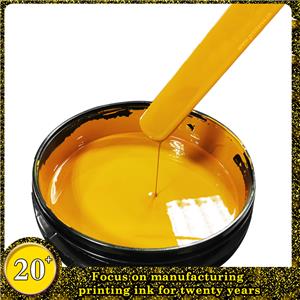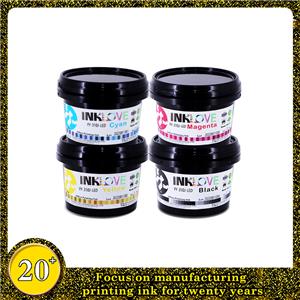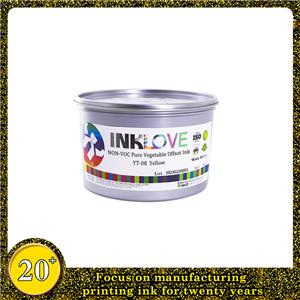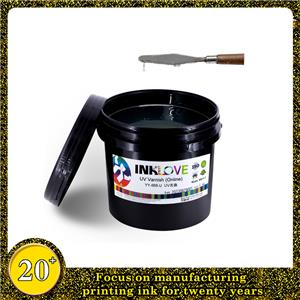What is UV Varnish?
UV varnish is a kind of transparent coating, also known as UV varnish. Its function is that after spraying or rolling coating on the surface of the substrate, it is irradiated by UV lamps to make it change from liquid to solid, and then achieve surface hardening. It is scratch-resistant and scratch-resistant, and the surface looks bright, beautiful and round .
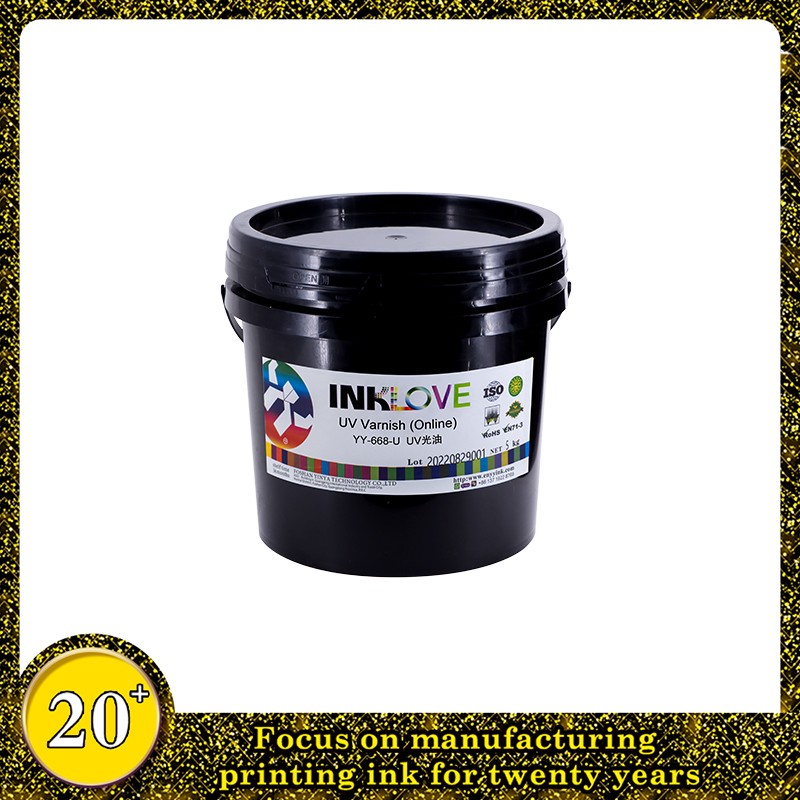
Precautions
1. The normal operating temperature of UV varnish is 50-55°C. When using at low temperature in winter, the UV varnish needs to be heated in a constant temperature water area to make the viscosity reach the designed viscosity, which is conducive to the leveling and rapid curing of UV varnish. .
2. When UV varnish passes through the area irradiated by UV lamps, the optimum temperature should be 50-60°C, because at this temperature, UV varnish cures quickly and has strong adhesion after curing. That is to say, the lower the temperature, the better under the UV lamp. Some manufacturers have poor adhesion and poor leveling when glazing low-temperature workshops in winter. The main reason is this.
3. The glazing machine should be placed in a place where sunlight cannot be directly irradiated, otherwise the UV varnish will be cured on the coating roller under the action of ultraviolet light in the sun. If you can't avoid direct sunlight, you should also use red and black curtains to block the sun's rays.
4. The UV varnish scraped off during glazing will bring the ink printed on the printing material to the UV varnish on the glazing machine, so that the varnish will be colored. However, after filtration and precipitation, these varnishes can continue to be used and do not need to be thrown away.
5. With the development of science and technology, the irritation of UV varnish has been greatly reduced. However, during the glazing operation, if the skin touches the UV varnish, it should be washed off with soapy water immediately, otherwise the skin may become red, swollen and blistered.
6. The viscosity of UV varnish depends on the type of glazing machine, and special varnish should be selected according to the type of glazing machine. If the viscosity of the UV varnish cannot reach the viscosity required by the glazing machine, it can be removed with a thinner or thickened with a thickener. However, after such adjustment, the curing speed, brightness and adhesion of UV varnish will be lost.
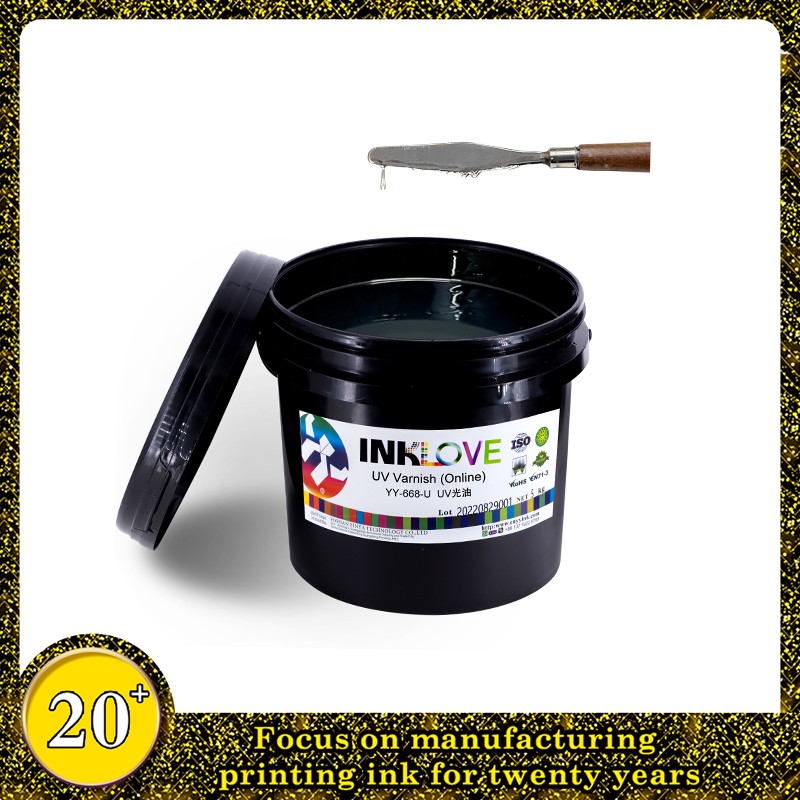
Features of uv varnish:
UV varnish has different powerful features from other UV coatings:
1. Excellent adhesion. During the inspection, the tape of 3M Company of the United States was used to pull the same place three times, and the UV coating would not fall off.
2. High gloss, high smoothness and high leveling. The slip agent produced by BYK, the world's best additive company, is used. It can almost achieve a mirror effect under a good UV machine. It has the characteristics of fine film formation and good hand feeling. The gloss is above 85 degrees.
3. Fast curing speed. On the premise that the energy of the UV machine is sufficient, the speed can reach an efficiency of more than 8,000 sheets of paper per hour, which greatly saves time.

common problem
First,the gloss is not good and the brightness is not enough.
main reason
1. The viscosity of UV oil is too small and the coating is too thin
2. Excessive dilution of non-reactive solvents such as ethanol
3. Uneven coating
4. Paper is too absorbent
5. The anilox roll of the rubberized anilox roller is too fine, and the oil supply is insufficient
Solution: Appropriately increase the viscosity and coating amount of UV varnish according to the different conditions of the paper: for the paper with strong absorption, a layer of primer can be applied first.
Second,the drying is not good, the curing is not complete, and the surface is sticky
main reason
1. The intensity of ultraviolet light is not enough
2. The ultraviolet lamp is aging and the light intensity is weakened
3. The storage time of UV varnish is too long
4. Add too much diluent that does not participate in the reaction
5. The speed of the machine is too fast
Solution: When the curing speed is less than 0.5s, generally the power of the high-pressure mercury lamp should not be less than 120W/cm; the lamp tube should be replaced in time, and a certain amount of UV varnish curing accelerator should be added if necessary to accelerate drying.
Third,the UV varnish on the surface of the printed matter cannot be applied, and it will become blurred
main reason
1. The viscosity of UV varnish is too small, and the coating is too thin
2. The content of varnish or dry oil in the ink is too high
3. The ink surface has been crystallized
4. There are too many anti-sticking materials (silicone oil, powder spraying) on the ink surface
5. The screen line of the glue-coated anilox roller is too thin
6. Problems with construction technology (technicians are not skilled)
Solution: For products that require UV varnish, corresponding measures should be taken during printing to create certain conditions: UV varnish can be applied thicker, and primer or special varnish formula should be used when necessary.
Four, UV glazing coating has white spots and
1. Coating and thin
2. Glue-coated anilox roller is too fine
3. Excessive addition of non-reactive diluent (such as ethanol)
4. There is a lot of dust on the surface of the printed matter
Solution: keep the production environment and the surface of the printed matter clean; increase the thickness of the coating; add a small amount of smoothing aid: the release agent is preferably a reactive diluent that participates in the reaction.
Five uneven coating of UV varnish, streaks and orange peel phenomenon
main reason
1. The viscosity of UV varnish is too high
2. The screen line of the glue-coated anilox roller is too thick (the coating amount is too large), and the surface is not smooth
3. Uneven coating pressure
4. Poor leveling of UV varnish
Solution: reduce the viscosity of varnish and reduce the amount of coating; adjust the pressure evenly; the coating roller should be ground and polished; add bright and leveling agent.
Six, UV varnish adhesion is not good
main reason
1. Crystallization of printing ink surface
2. The additives in printing ink are not suitable
3. The adhesion of UV varnish itself is insufficient
4. The light curing conditions are not suitable
Solution: The printing process should consider the glazing conditions in advance; apply a primer to enhance the adhesion on the printed product.
Seven,UV varnish thickens and gels
main reason:
1. The storage time of UV varnish is too long
2. UV varnish cannot be stored completely away from light
3. The storage temperature of UV varnish is too high
Solution: Pay attention to the effective service life of UV varnish and store it strictly away from light. The storage temperature is 5~25℃.
Eight,large residual odor
main reason:
1. The curing of UV varnish is not complete
2. Insufficient ultraviolet light or aging of UV lamp
3. UV varnish has poor anti-oxygen interference ability
4. Too much non-reactive diluent is added to UV varnish.
Solution: The curing of UV varnish must be thorough, and the ventilation should be strengthened, and the variety of varnish should be replaced if necessary.

